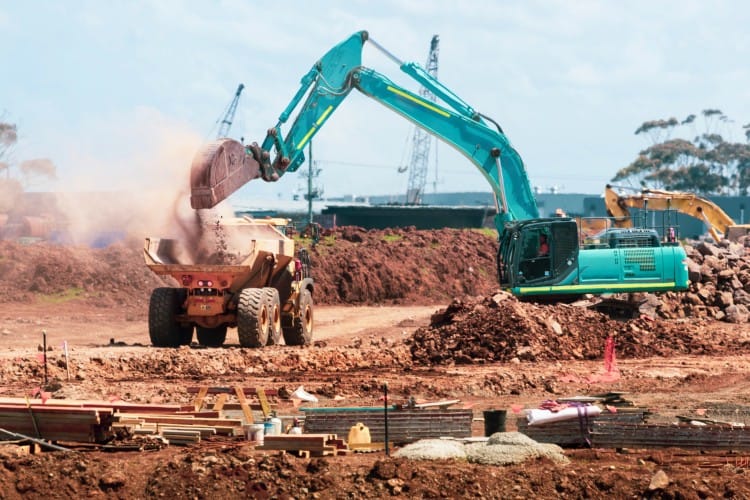
10 Types of Heavy Construction Equipment and Their Uses
March 12, 2024 - Emily Newton
Revolutionized is reader-supported. When you buy through links on our site, we may earn an affiliate commission. Learn more here.
Construction is rarely simple. Workers need to flatten land, move bulky materials and scale extremely tall structures. For these reasons, heavy equipment is a must on just about every site.
There are many types of construction equipment. Each vehicle has its own uses and different available configurations. With the right equipment, a construction company can make the process as efficient and safe as possible.
If you’re new to this industry, this quick construction equipment guide will familiarize you with the main vehicles industry pros use today. These 10 types of heavy equipment are some of the most common found on construction sites.
1. Excavators
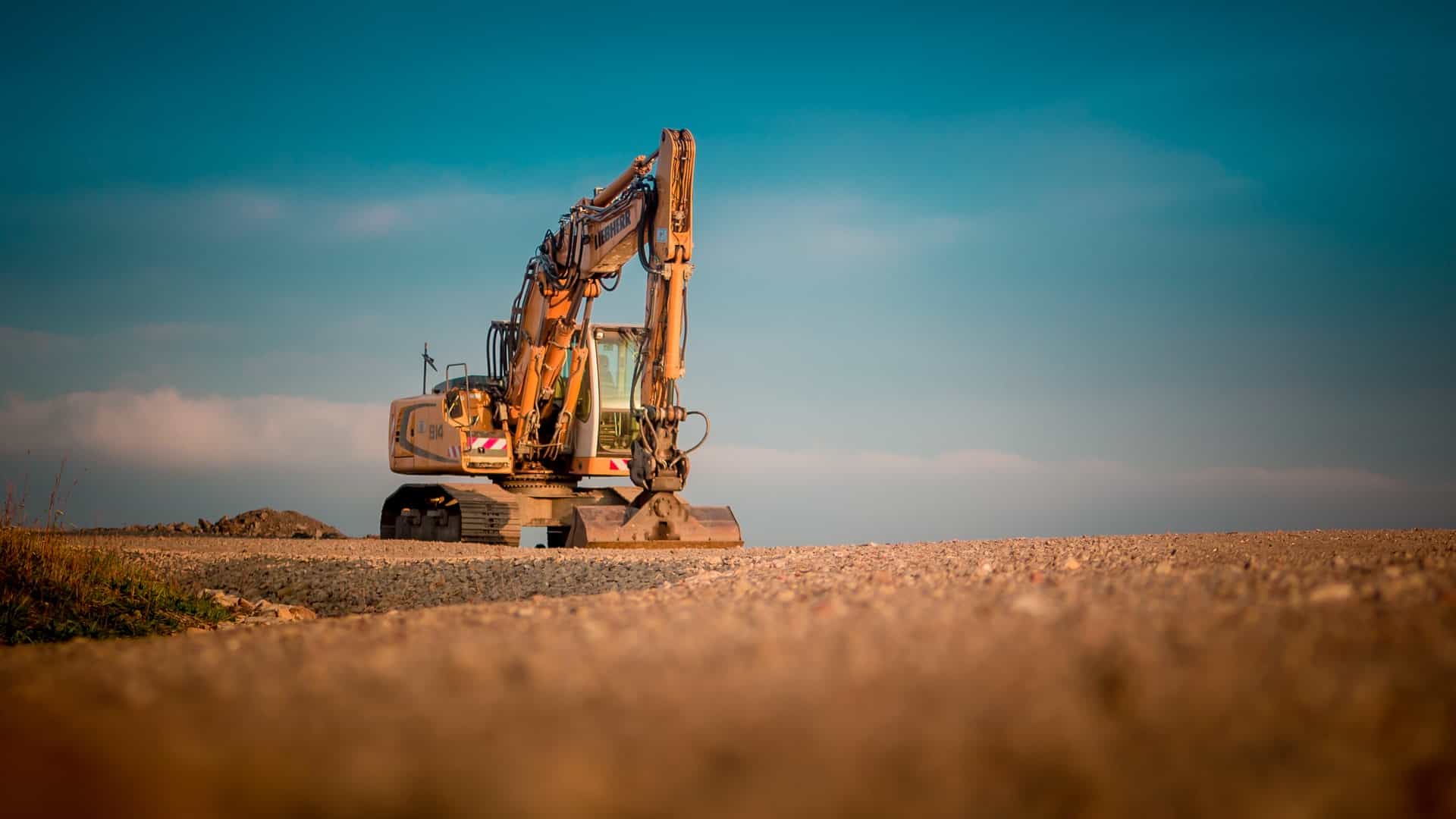
Excavators are widely used heavy construction equipment. As the name suggests, they’re mostly used for the excavation and moving of earth. In some cases, they’re also used to move materials, demolish structures and cut trees.
Every excavator has a cabinet where the operator sits and controls the long arm, which holds a digging bucket. There are a wide variety of different tools and accessories users can install in place of a standard bucket, though. For example, there are claws, grippers and buckets with specialized shapes for handling different tasks. The entire arrangement can be rotated up to 360 degrees around the excavator’s central point.
Construction companies use a few different types of excavators. The most commonly used are wheel and track models. Wheel excavators move with the help of massive, construction-grade equipment tires, while track versions use steel tracks to get around. There are also mini excavators, including some models small enough to fit through standard doorways!
2. Bulldozers
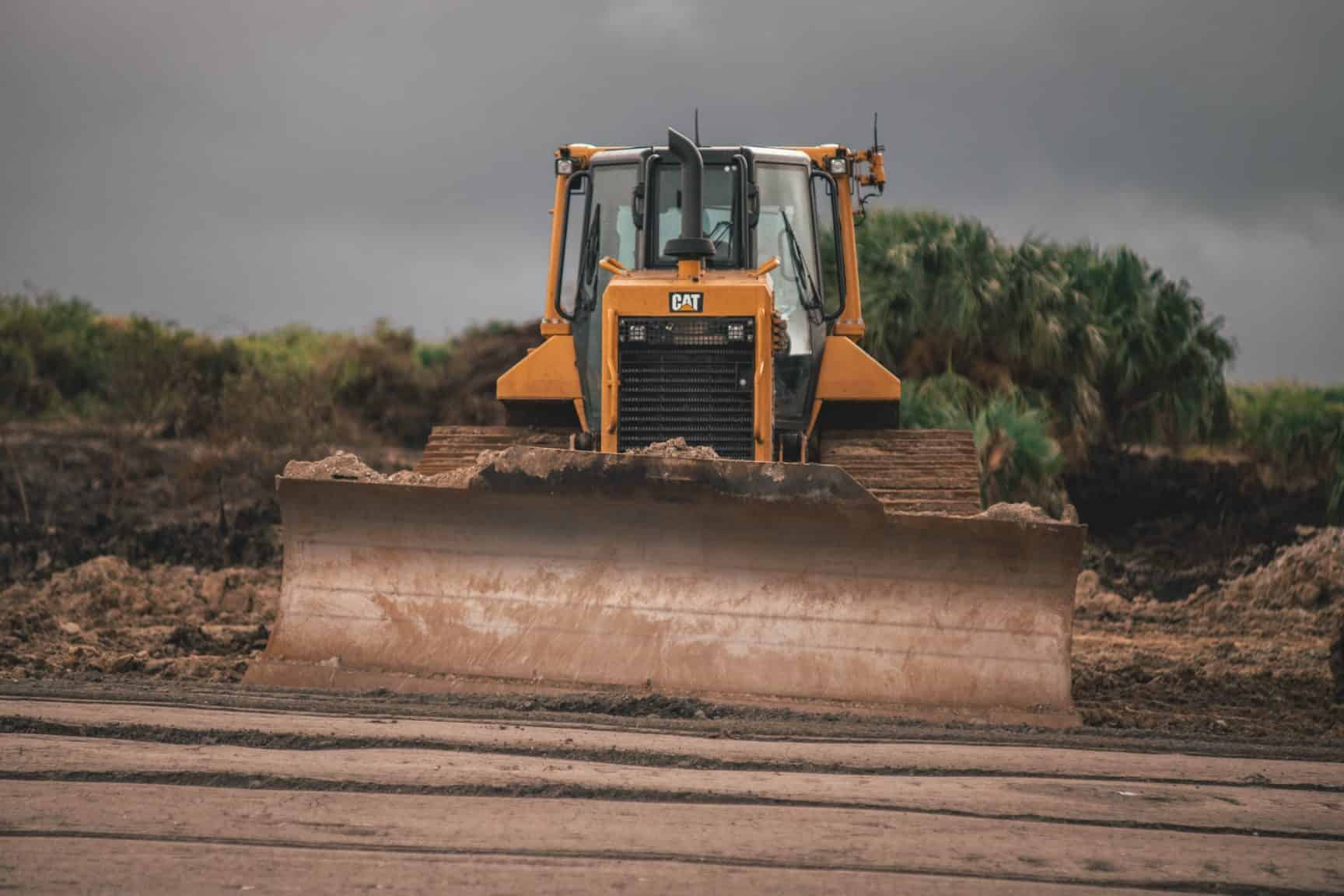
Bulldozers, or simply dozers, are heavy equipment with a large metal blade on the front that’s used to push soil and other materials.
Bulldozers come in a variety of sizes, from huge industrial bulldozers to mini dozers anyone can use in a typical backyard. Dozers of all sizes are used in construction as well as agriculture. Some municipalities also use bulldozers for moving snow in areas that get heavy winter precipitation. They’re highly useful and versatile pieces of heavy equipment.
As with excavators, there are both track and wheel dozers. Wheel dozers are much faster than their counterparts, but they also concentrate their weight over less area. As a result, they are much more likely to sink into the earth. Because they distribute pressure better than wheels, tracks also tend to disturb less ground when moving and provide better grip.
3. Pavers
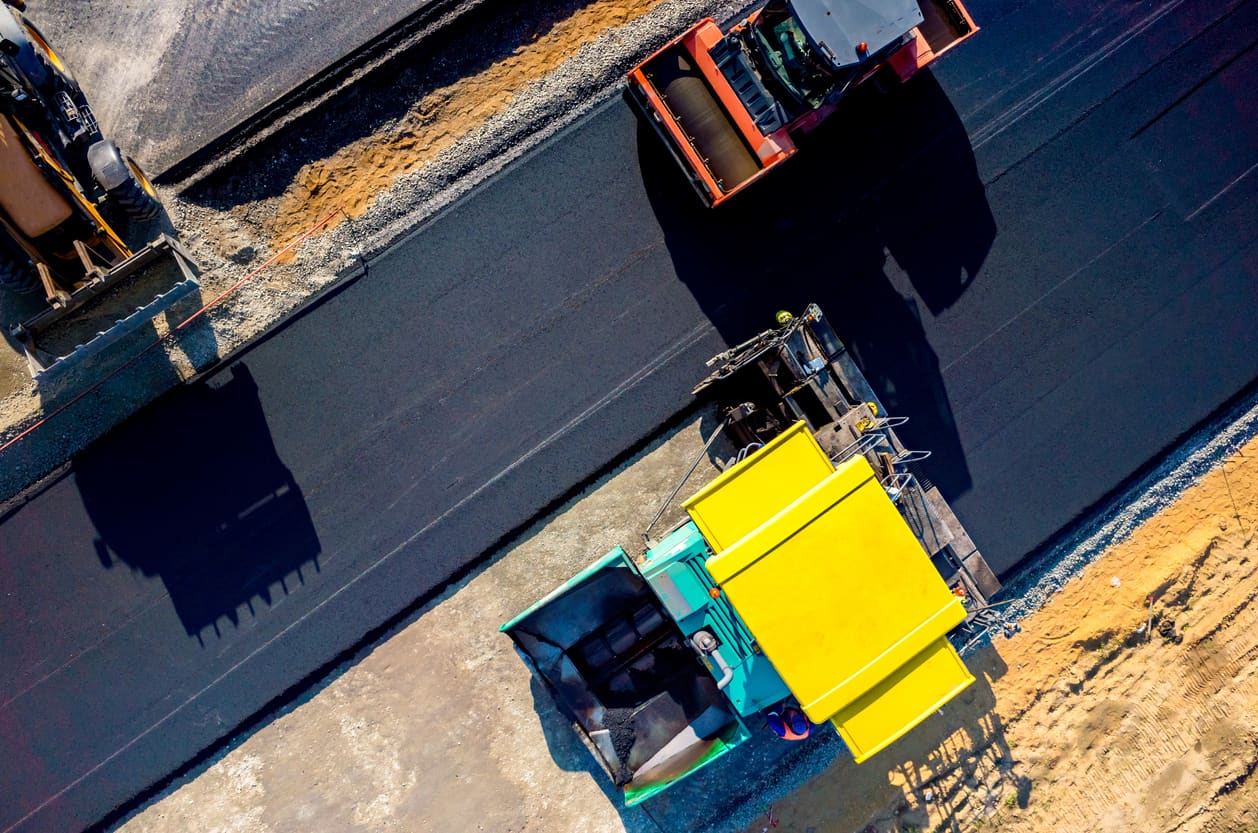
Asphalt pavers, often simply called “pavers”, are used to lay down asphalt for roads, bridges, parking lots and other surfaces. They work by transferring asphalt from a dump truck to the road, spreading it across the surface that’s being paved.
Typically, these machines will provide a bit of compaction on the asphalt they put down, but not enough to make it flat. Most of the time, they’ll be accompanied by a compactor or other machine that can roll the asphalt flat. However, by adding a tool called a screed, a paver can level, flatten and compress surfaces.
There are two main types of pavers: wheeled and tracked. Both function similarly, but tracked pavers have significantly more traction. Wheeled pavers are usually only used for tasks like repairing an existing road surface while tracked pavers are used to put down fresh asphalt on rough surfaces.
4. Compactors or Rollers

A compactor or roller is a large machine with a rolling cylinder tool on the front end, like large steel drums or tires. Construction companies use these machines when they need a surface to be as flat as possible. The most common type of compactor looks a lot like a backhoe or excavator with a big rolling pin on the front.
There are a variety of different types of compactors. For example, vibratory compactors are used to flatten materials that have naturally occurring empty spaces. These vacant areas may make the surface unstable, which can damage foundations and other structures over time.
As compactors move, they also vibrate, shaking the paved material and ensuring it’s flat and free of empty pockets. The compacted soil should then provide a stable base for any construction.
Rollers are one of the most common types of construction equipment to find in urban construction projects. They’re essential for building things like roads and parking lots, often in conjunction with an asphalt paver.
5. Telehandlers
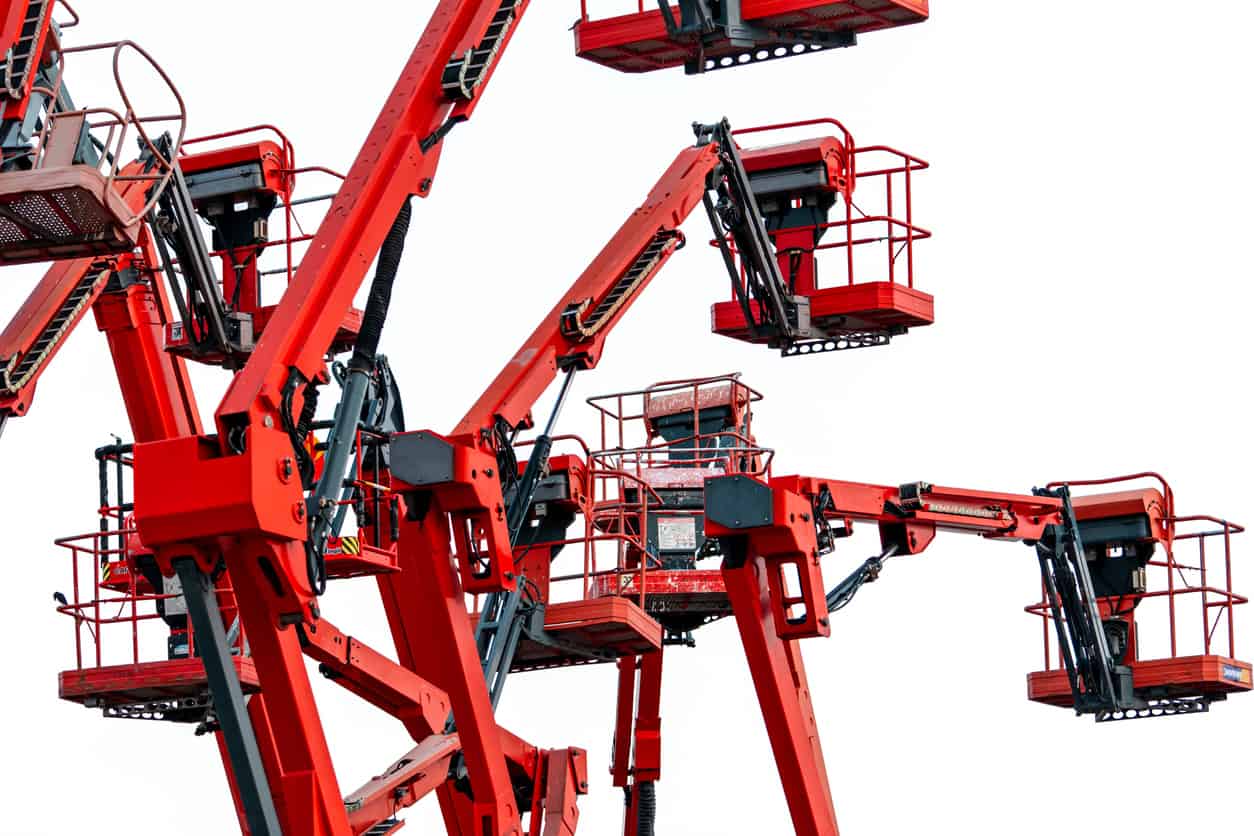
Telehandlers, also called telescopic handlers, teleporters and reach forklifts, are one of several types of construction equipment used to reach high places. They mix the capabilities of a forklift and a crane by effectively putting a forklift platform on a crane-style boom arm. Telehandlers can be a distinct piece of equipment or integrated into a larger truck, like those used by utility companies to repair power lines.
Telehandlers come in a wide variety of sizes and arm lengths. Knowing how to pick the right size equipment is important for any construction company, but it’s especially important when selecting a telehandler. One that’s too small or too large won’t be able to work effectively.
There are also a variety of different attachments for telehandlers. Workers can use a standard pallet fork, but there are also buckets and jibs for handling different types of tasks. Buckets are great for safely lifting people up to perform manual tasks without a ladder.
6. Dump Trucks
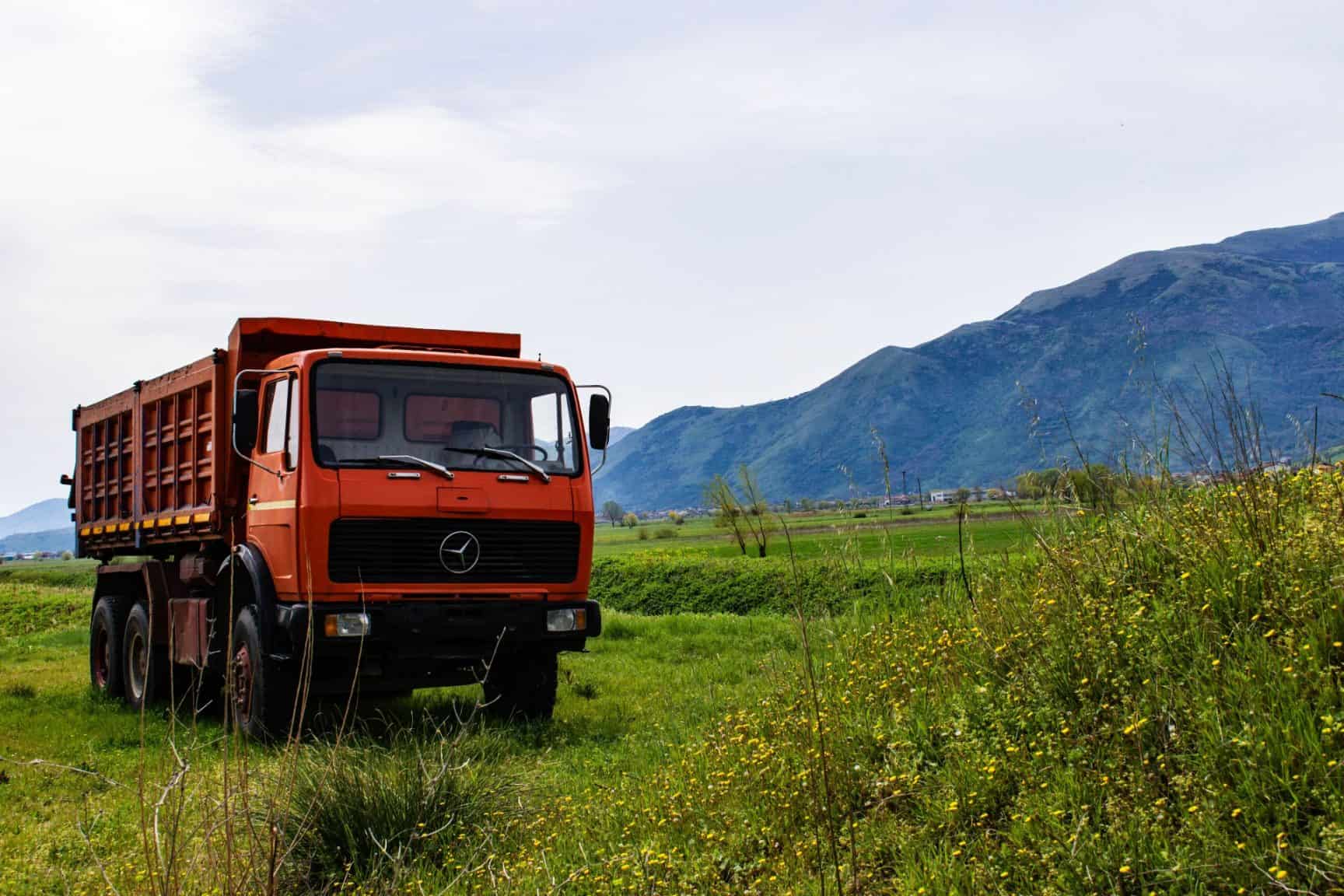
No construction equipment guide is complete without dump trucks, one of the most iconic symbols of the whole construction industry. Dump trucks are used to move large amounts of material from one place to another, then deposit it where it’s needed.
There are two main types of dump trucks: rigid and articulated. Rigid dump trucks have an immobile chassis. This is the most well-known type of dump truck, with a bed that extends partially over the cab.
Articulated dump trucks have a pivot between the cabin and truck bed. As an articulated truck drives over uneven terrain, the pivot allows more stability and flexibility. Articulated dump trucks are typically more expensive than rigid models. They’re also a lot more maneuverable and fare better than rigid trucks on rough terrain, which is why they’re considered the premium option.
7. Pile Drivers
Some types of construction equipment are built for highly specific use cases, like the pile driver. This machine is used to drive pile foundations — long, slender columns made out of concrete, timber or other sturdy materials — into the earth. These machines lift piles, hold them in the correct position and then drive them into the ground to the needed depth.
How the machine gets the pile into the ground depends on the specific piece of equipment. Some will hammer the pile in or use hydraulic force. Others will simply drop it from a height.
8. Trenchers
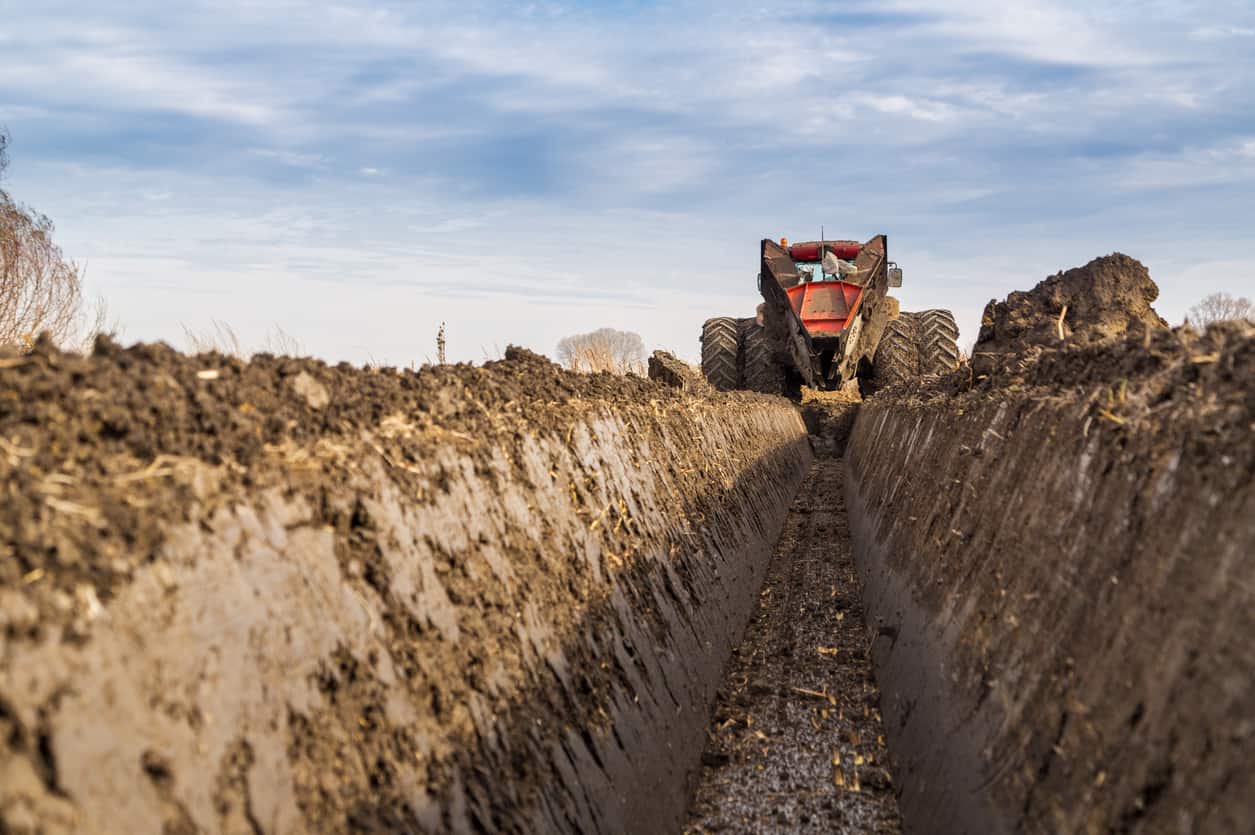
Trenchers are large machines used to excavate trenches in soil. They’re typically used for building and installing pipelines, cables or drainage ditches. They’re one of the most crucial and common types of construction equipment today, especially as underground utilities like buried power lines become more prominent.
There are two main types of trenchers — wheel and chain. Chain trenchers are outfitted with a long arm around which a toothed chain is attached. Wheel trenchers use a metal wheel with digging teeth. Both create the same kind of trench, but wheel trenchers are better at working in tough soil layers.
While other machines, like excavators, can do the same work as trenchers, they’re not nearly as effective. In some cases, one trencher can be as efficient as four excavators.
9. Backhoe Loaders
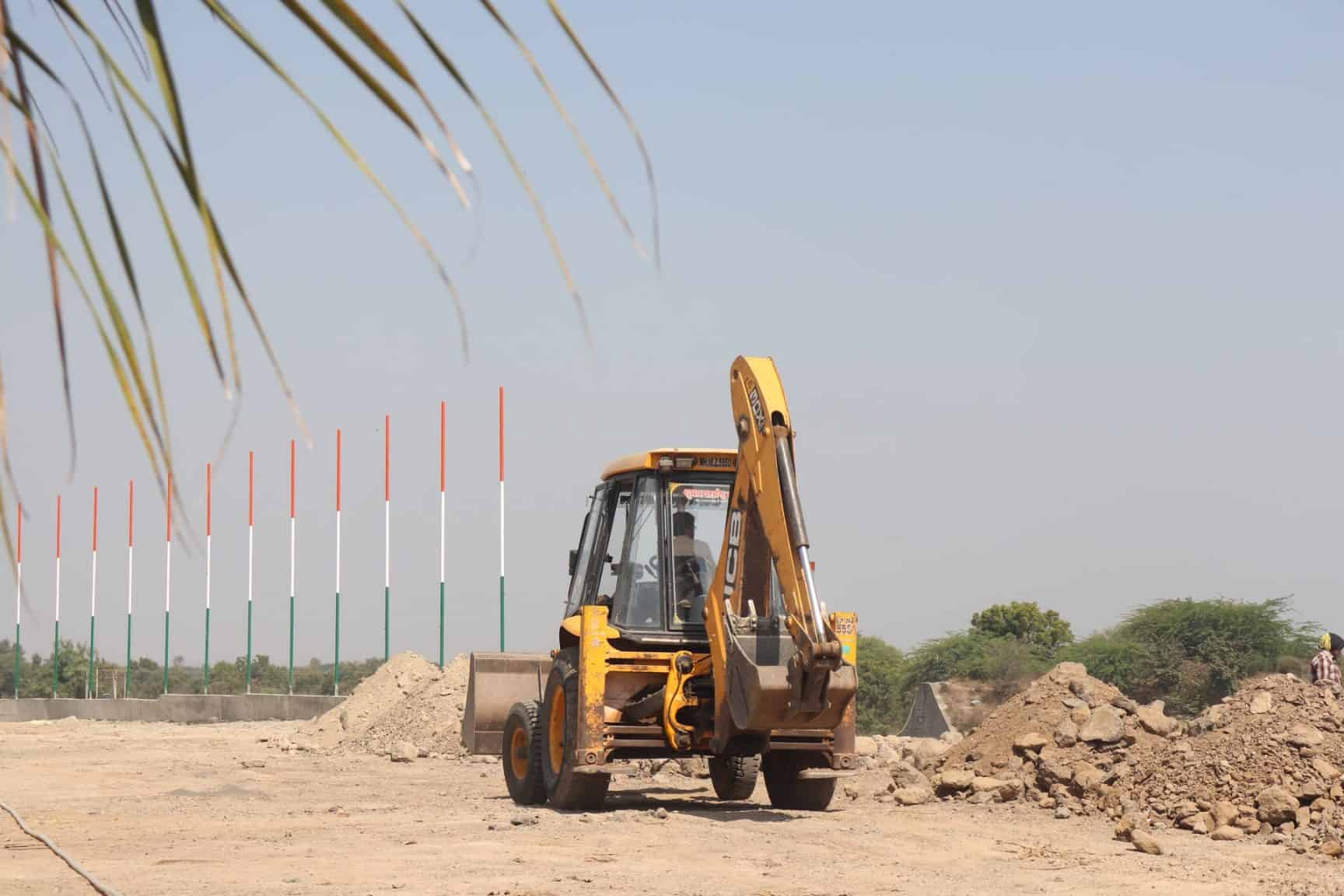
The backhoe loader is similar to the excavator. It has a digging bucket attached to an arm that’s controlled by an operator from a central cabin. The bucket may sometimes be replaced with other attachments, like rippers and thumbs. Unlike the excavator, however, this digging assembly is attached to the back of the machine. The backhoe also has a loader on the front.
Backhoes typically can’t lift as much as excavators. Construction companies most often use them for smaller-scale projects. Backhoes are one of the most versatile types of construction equipment. So, they’re also commonly found working on everything from roads and bridges to agriculture and residential projects.
10. Tower Cranes
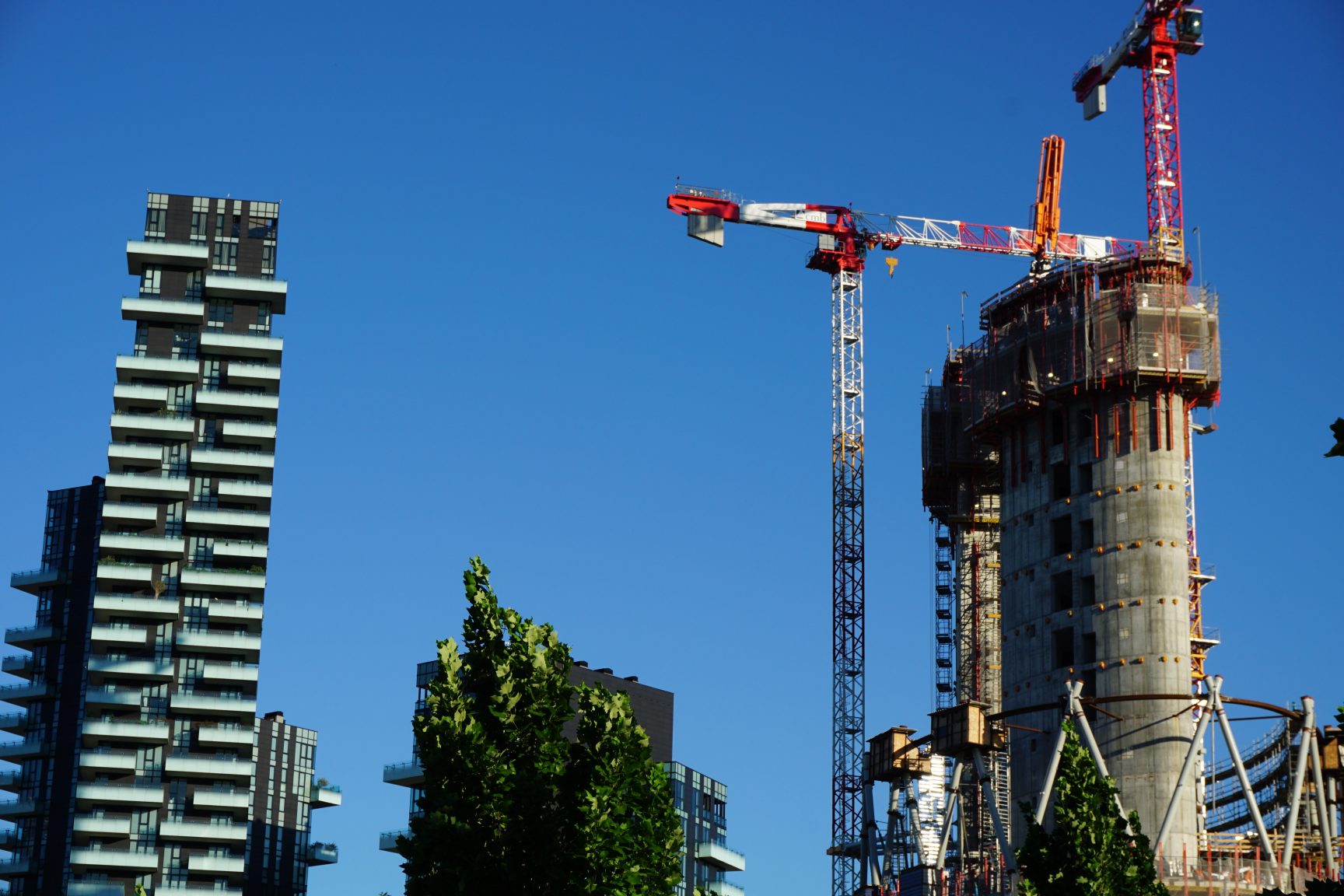
Every construction equipment guide needs to include cranes, a cornerstone of any urban construction site. Tower cranes are used to hoist materials up during the construction of tall structures, such as skyscrapers. Each one consists of a mast, which is the vertical tower that supports the structure. They also feature a jib, which is the crane’s arm, along with an operator’s cabin and counterweight, called a counter jib.
Whenever a construction company needs to lift heavy materials that can’t otherwise be moved up a structure easily, they usually rely on a tower crane.
It’s no surprise then that tower cranes can be one of the largest pieces of construction equipment on a job site. Operating a tower crane isn’t for the faint of heart, either – drivers need to climb a ladder to reach the cab, sometimes hundreds of feet above the ground.
Different Heavy Equipment for Different Jobs
You may see other machines on a construction site, but these are some of the most common.
The functions of these items overlap somewhat, but each is specially equipped for a specific task. Most construction sites will need a mixture of machines from this list for maximum cost-effectiveness and efficiency.
This article was originally published on September 17, 2020. It was updated on March 12, 2024 to include more information.
Revolutionized is reader-supported. When you buy through links on our site, we may earn an affiliate commission. Learn more here.
Author
Emily Newton
Emily Newton is a technology and industrial journalist and the Editor in Chief of Revolutionized. She manages the sites publishing schedule, SEO optimization and content strategy. Emily enjoys writing and researching articles about how technology is changing every industry. When she isn't working, Emily enjoys playing video games or curling up with a good book.


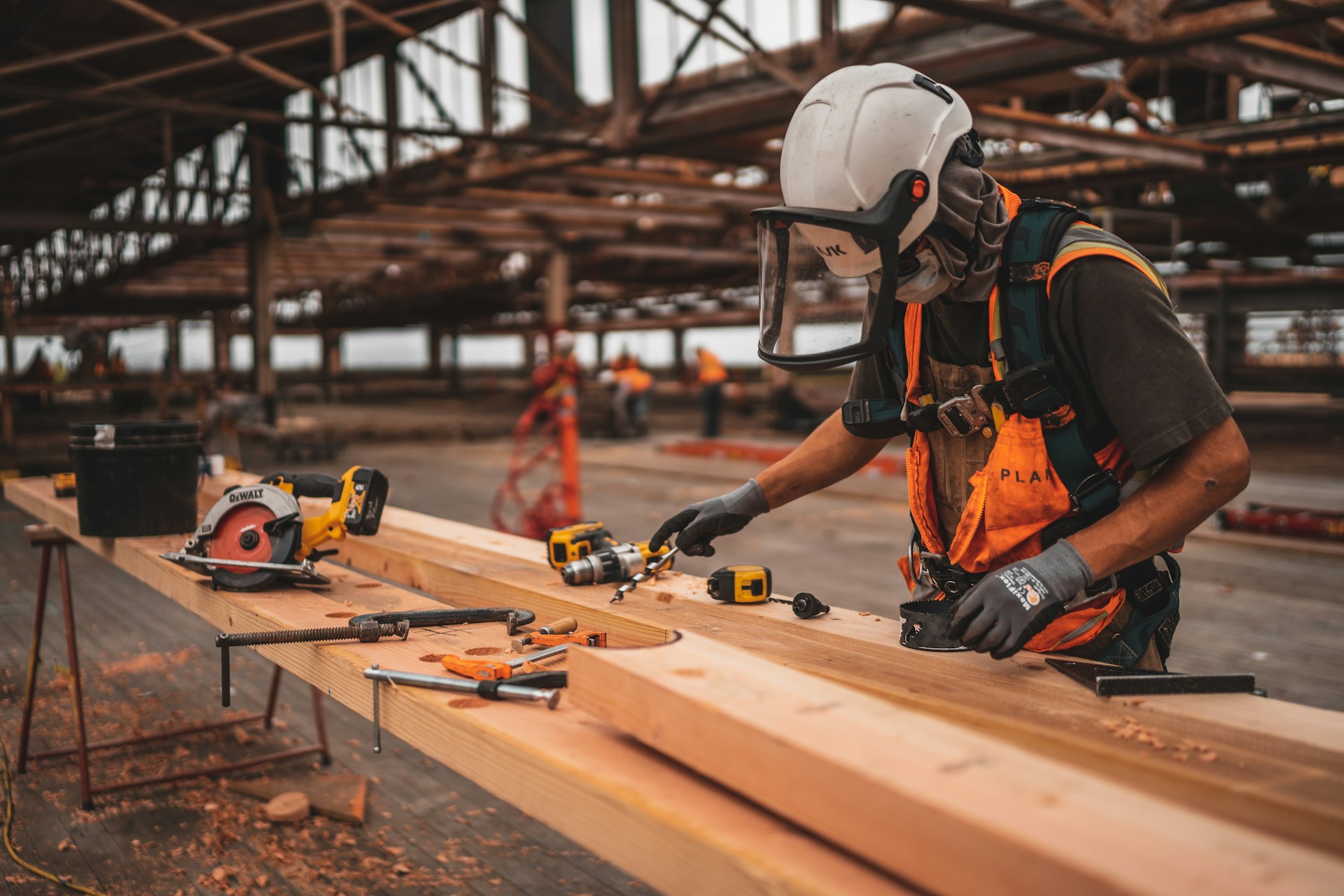


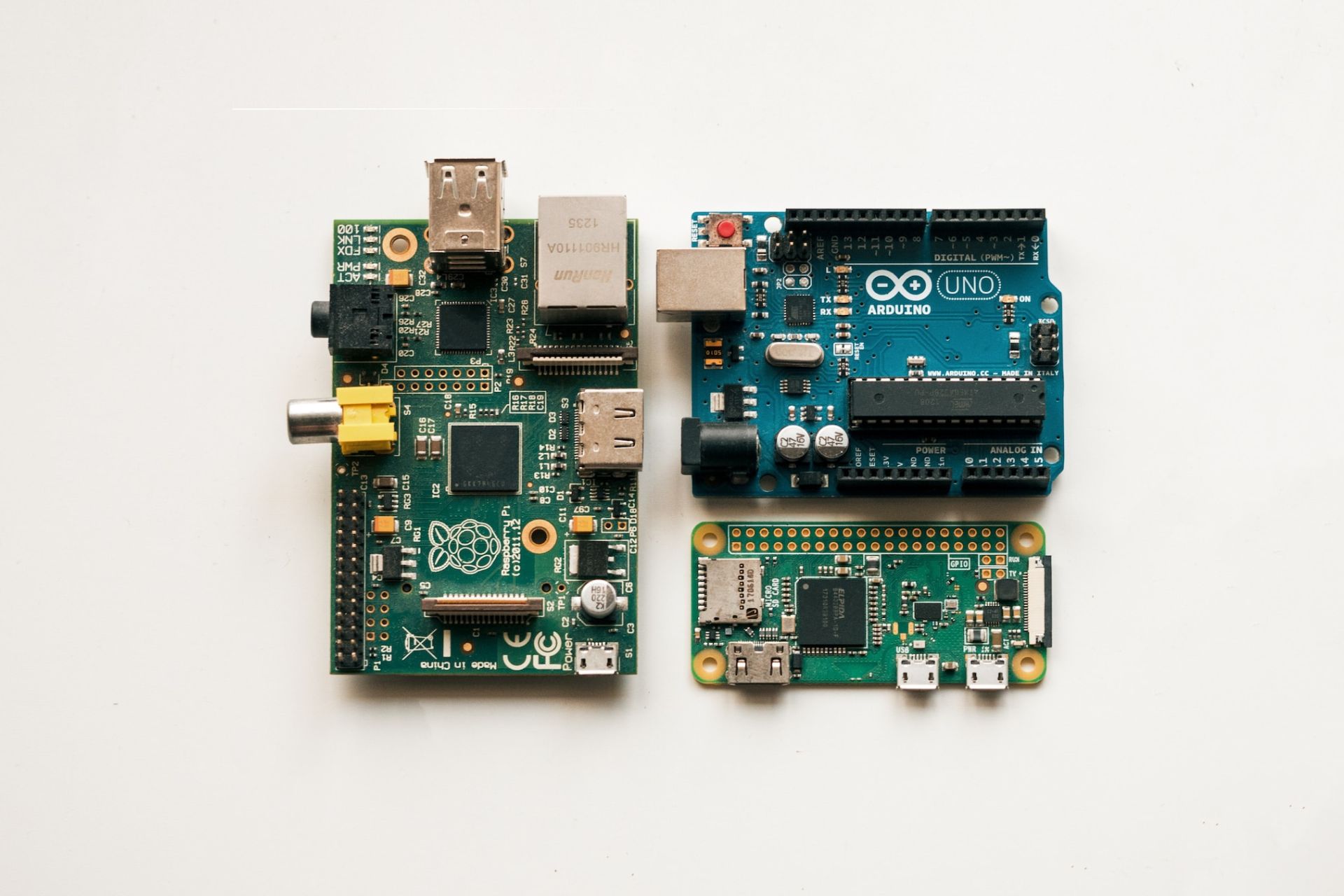
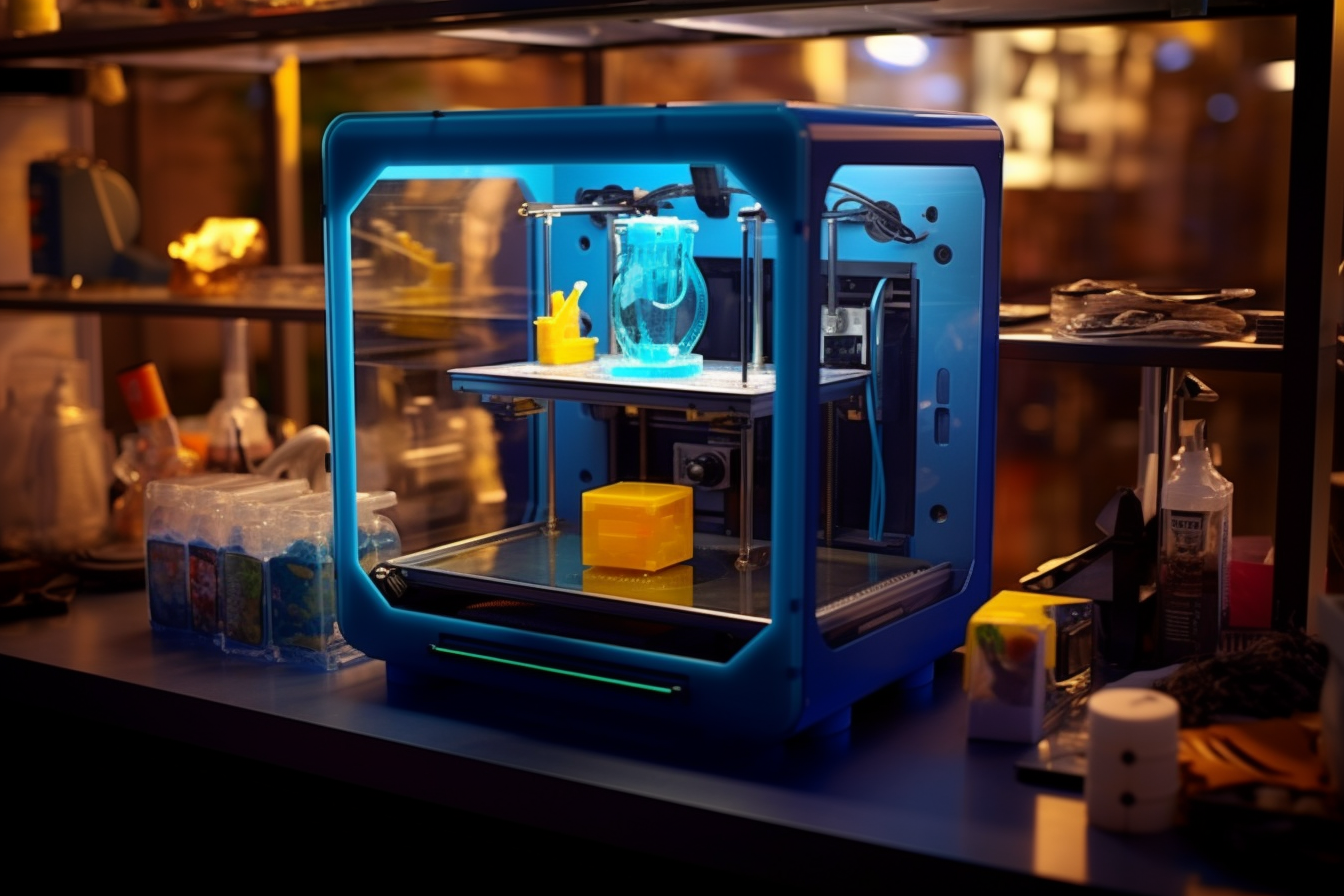
Recently, my dad’s construction firm was awarded a large project that calls for heavy lifting machinery, however it is only a temporary position. He is certain that the most economical and sensible course of action for this particular project is to hire a forklift rather than buy one. Even if you acknowledged that there is a large range of construction equipment and that each kind has unique applications and configurations, a construction business may maximize process efficiency and safety by selecting the appropriate equipment.
Thank you for letting us know that excavators are mostly used for earthmoving and excavation purposes, hence the name, which is why they are widely used in the construction industry. I need to get site clearing done soon since I was planning on investing in a pool resort, so I need to make sure first that the land is ready before we can start with the construction. I’ll take note of this while I look for earthworks companies to contact for help soon.
You made a good point about how there are many different types of construction machinery. Every kind has a unique set of applications and setting options. A construction business may optimize process efficiency and safety by using the appropriate tools. As a flood prevention measure, one of my neighbors demands that he dig a substantial trench around his lawn. If so, he will eventually need to locate the appropriate tools to complete the endeavor. I appreciate the article.
It’s fantastic that you went into further detail about how there are many different types of construction equipment. Every kind has a unique set of applications and setting options. A construction business may optimize process efficiency and safety by using the appropriate tools. This makes me think of construction firms that need to locate a supply of reliable starters for their machinery. I could see how starters would need to be examined before being placed to make sure they would function well and securely.
Awesome! Information. Great work thank you for sharing such useful information. keep it up all the best.
Pictures speak a thousand words. This article would do better if the description of each equipment was accompanied by a picture. Any way I could Google the images. Thanks a lot
Thanks for the suggestion Kelvin! I’ll get this on my schedule and update it soon. Thanks for reading Revolutionized.